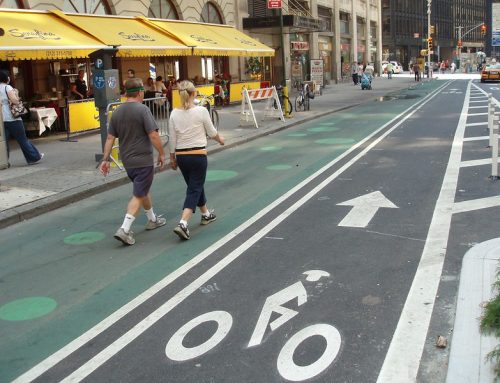Whether you’re a seasoned cyclist or just starting out, these guidelines will help you stay safe on the roads. Let’s dive in!
Importance of Summer Bicycle Safety
Cycling during the summer is a popular activity that allows you to enjoy the great outdoors and stay active. However, it’s crucial to understand the importance of prioritizing safety to prevent accidents and injuries. According to the National Safety Council, thousands of cyclists are injured or killed each year in bicycle-related incidents. By following the summer bicycle safety guidelines outlined in this guide, you can significantly reduce the risk of accidents and enjoy your rides with peace of mind.
Choosing the Right Bicycle
Choosing the right bicycle is the first step to ensuring a safe and comfortable riding experience. Consider the following factors when selecting a bicycle:
1. Bike Type and Size
It’s important to choose a bike that suits your intended use. Whether you prefer road biking, mountain biking, or a hybrid bike, select the type that aligns with your cycling goals. Additionally, ensure that the bike is the correct size for your height and leg length. A properly fitting bike improves your comfort, control, and maneuverability.
2. Bike Maintenance
Regular bike maintenance is crucial for safety and optimal performance. Before each ride, inspect your bicycle to ensure everything is in proper working order. Check the brakes, tires, gears, and chain. It’s important to keep your bike clean, lubricate the chain, and tighten any loose parts. If you’re unsure about bike maintenance, consider consulting a professional for assistance.
Essential Safety Gear
To enhance your safety while cycling during the summer, it’s essential to wear the appropriate safety gear. Here are the essential items you should have:
1. Helmet
A properly fitting helmet is the most critical safety gear for cyclists. It protects your head in the event of a fall or collision. Always wear a helmet that meets safety standards when riding, regardless of distance or skill level.
2. Reflective Clothing
Wearing bright or reflective clothing significantly improves your visibility to motorists, especially during low-light conditions. By making yourself more noticeable, you reduce the risk of accidents.
3. Lights and Reflectors
Installing front and rear lights on your bike is essential for enhancing visibility, particularly when riding at night or in low-visibility situations. Additionally, attaching reflectors to your pedals, wheels, and clothing further improves your visibility to other road users.
Safe Riding Practices
To ensure a safe biking experience, it’s crucial to adopt and follow these best practices while on the road:
1. Observe Traffic Laws
Treat your bicycle as a vehicle and abide by all traffic laws and signals. Stop at red lights, yield to pedestrians, and use proper hand signals when turning or changing lanes. Following traffic laws promotes predictability and helps you communicate your intentions to other road users.
2. Be Predictable
Maintaining a steady line of travel and avoiding sudden movements or swerving is essential. Signaling your turns or lane changes well in advance provides motorists with ample time to react and minimizes the risk of accidents.
3. Stay Alert
Keeping your focus on the road and your surroundings is crucial for your safety. Continuously scan for potential hazards, such as parked cars, pedestrians, and other cyclists. Avoid distractions, such as using your phone or wearing headphones, which can compromise your awareness while riding.
4. Be Mindful of Weather Conditions
Summer weather can be unpredictable, so it’s important to stay informed about the forecast before heading out for a ride. Make sure you are prepared for changes in weather conditions such as wind, rain, or extreme heat. Adjust your riding style accordingly to ensure your safety and comfort.
Bicycle Maintenance Tips
To ensure your bike operates smoothly and safely throughout the summer, it’s important to prioritize bicycle maintenance. Proper maintenance not only prolongs the life of your bike but also reduces the risk of accidents caused by mechanical failures. Here are some detailed tips for effective bicycle maintenance:
1. Tire Inspection
Regularly inspect your bike tires to ensure they are in good condition. Check for signs of wear and tear, such as tread wear or cuts in the rubber. Replace tires that show significant wear or damage. Additionally, make sure the tires are properly inflated according to the manufacturer’s recommended pressure. Underinflated tires can affect your control and stability while riding.
2. Brake Maintenance
Brakes are a critical component of your bike’s safety system. Regularly check the brake pads to ensure they are not worn down. If the brake pads appear thin or worn, replace them promptly to maintain optimal braking performance. Adjust the brake cables if necessary to ensure the brakes engage smoothly and effectively. Remember to test the brakes before each ride to ensure they respond properly.
3. Lubrication
Proper lubrication is essential for keeping your bike’s moving parts functioning smoothly and preventing excessive wear. Start by cleaning the chain and other drivetrain components using a bike-specific degreaser. Once clean, apply a suitable lubricant to the chain, derailleurs, and other pivot points. Be sure to use a lubricant appropriate for the prevailing weather conditions. Excess lubricant should be wiped off to prevent attracting dirt and debris.
4. Gear Adjustment
Accurate and smooth gear shifting enhances your riding experience and ensures efficient power transfer. Regularly check the gear shifting performance and make adjustments if necessary. Use the barrel adjusters on the shifters or derailleurs to fine-tune the gear indexing. If you’re unsure about how to properly adjust the gears, it’s recommended to seek assistance from a bike mechanic.
5. Wheel Truing
Wheel truing refers to the process of straightening a slightly bent wheel. Check your wheels for any noticeable wobbles or unevenness. If you identify any issues, you can attempt to true the wheel yourself using a spoke wrench. However, if you are unsure or the wheel has significant damage, it’s best to take it to a professional for truing to ensure proper alignment and tension.
6. Regular Cleaning
Cleaning your bike regularly not only keeps it looking good but also helps identify any potential issues. Use a gentle bike-specific cleaner and a soft brush or sponge to clean the frame, fork, and components. Pay attention to hard-to-reach areas such as the bottom bracket and rear derailleur. After cleaning, thoroughly dry the bike and apply a protective polish or wax to the frame for added longevity.
By following these comprehensive bicycle maintenance tips, you can ensure your bike remains in excellent condition, reducing the risk of unexpected mechanical failures while riding. Regular maintenance not only enhances your safety but also contributes to a smoother and more enjoyable cycling experience.
Conclusion
We hope you found these tips helpful! You are now equipped with a comprehensive understanding of summer bicycle safety. By following the guidelines outlined in this article, you can enjoy your summer rides while prioritizing your safety. Remember, choosing the right bicycle, wearing the necessary safety gear, practicing safe riding techniques, and maintaining your bike are key to a successful and incident-free cycling experience. Happy cycling, and stay safe!
Remember, implementing these best practices and creating high-quality content is crucial for outranking other websites and securing a prominent position on search engine result pages. We strive to provide you with the most detailed and comprehensive information to help you outrank the article you provided and establish yourself as a reliable source of summer bicycle safety knowledge.






